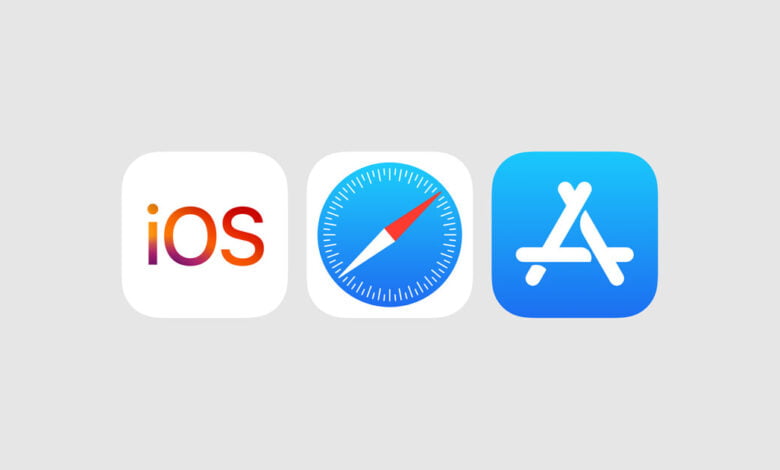iOS Testing Tools for 2024

Mobile technology is continuously evolving, and so are users’ expectations. Organizations must deliver faultless, intuitive, and reliable mobile experiences. Automation testing is an essential part of the mobile app development process to fulfill these requirements. It ensures that applications perform seamlessly across different operating systems, devices, and user scenarios, providing user satisfaction and the application’s reputation.
The persistent threat of bugs and glitches can ruin the developers’ endeavors. Therefore, thorough mobile app testing tools are crucial to ensure optimal performance and outstanding end-user experience.
This blog contains some of the top iOS testing tools for 2024 that testers and developers can leverage to provide the functionality and quality of their iOS applications.
What is iOS App Testing?
iOS app testing validates iOS applications’ quality and functionality on Apple devices, such as iPhones, iPads, or iOS Simulators. It also checks whether the application functions according to end-user expectations. Furthermore, it determines specific user actions, such as user interface, behavior functionality, installation time, user experience, OS version support, and load time.
Released in June 2007, iOS is the operating system developed by Apple. Apple does not authorize iOS on non-Apple hardware through licensing agreements. The iOS app can be installed only on Apple devices. Through rigorous iOS app testing, it is crucial to ensure the application’s compatibility with all iOS versions and devices. Bugs and glitches can cause application crashes during execution, security vulnerabilities, memory leaks, and iOS application incompatibility with the iOS version. This creates enormous challenges for organizations. These challenges can be resolved or minimized by executing iOS app testing.
iOS application testing allows early detection of bugs and glitches that may meddle with performance, ensures the quality standard of apps, improves user experience, and guarantees that the app aligns with the standards and guidelines of app development.
What are iOS Testing Tools?
iOS testing tools are software frameworks, programs, or libraries created to test the performance and functionality of iOS apps. They authorize testers and developers to write test scripts, mimic user interaction, and measure application performance. In other words, they automate the testing of iOS applications, making it easier and quicker to pinpoint and fix bugs.
iOS testing tools use unit, acceptance, integration, and functional testing techniques. These tests help verify the iOS app’s behavior and ensure that the app is in line with the end user’s expectations.
Why need iOS Testing Tools?
iOS testing can be performed manually or automatically. In manual testing, testers analyze the application’s functionality, features, and user actions to determine any issues. Nevertheless, manual testing is time-consuming and prone to errors. Manual testing cannot be overlooked, as it helps developers and testers identify bugs that might be bypassed by automated testing.
Automation testing is the best option for steadfast iOS application testing. In automated testing, iOS testing tools execute test scripts that simulate user interactions and scenarios, automating tedious, repetitive testing tasks.
iOS Testing Tools for 2024
In iOS development, efficient test automation has become crucial for the development cycle. Through using various iOS testing tools, developers can automate testing procedures and improve the quality of their applications. With these tools, developers can automate the testing process, thoroughly execute test cases, and generate comprehensive reports for detailed study.
Here are a few iOS testing tools for 2024:
LambdaTest
LambdaTest is an AI-powered test orchestration and execution platform. It is one of the best-streamlined tools for iOS app testing. With LambdaTest, quality analyst engineers can test iOS applications on real device cloud automatically or manually through its iOS automation testing cloud using frameworks for iOS, such as XCUITest and Appium.
The iOS app testing platform of LambdaTest eradicates the need to create simulators or maintain an in-house device library. Such tasks are expensive and time-consuming. To relinquishthese challenges, LambdaTest allows developers to choose their desired iPad and iPhone devices or iOS Simulators and start the testing process.
LambdaTest extends its testing capabilities to real mobile devices, providing a realistic environment for testing mobile applications. This includes testing on various devices, operating systems, and screen sizes, addressing the complexities associated with mobile app development.
Some of the pivotal features of LambdaTest are that the developers can:
- Directly upload their .app, .apk, or .zip files to the platforms and start testing with just one click upload.
- Pinpoint and debug the native application in real time using videos, network logs, screenshots, and device logs.
- Efficiently test the privately and locally hosted applications for compatibility before releasing them to the live environment.
- Assign bugs to the developers straight from the LambdaTest platform for quick fixes.
- It offers detailed test logs, one-click bug logging, and insights that help provide faster quality builds.
- LambdaTest is compatible with iOS testing frameworks such as Appium and XCUITest, enabling automation of iOS app testing processes.
XCUITest
XCUITest is an essential automation framework for iOS that was developed by Apple. XCUITest is an extension of XCTest designed to verify the functionality of specific code units within an iOS application. Using XCTest, developers can write UI tests to confirm the behavior of the user interface of iOS app elements like text fields, buttons, and menus.
A few pivotal features of XCUITest are that it:
- It integrates seamlessly with iOS frameworks, Xcode, and third-party tools. It is also compatible with Apple’s IDE for developing iOS applications.
- It offers additional classes for optimum user interface testing, such as UIAccessibility.
- Offer Xcode integration, facilitating the writing of test scripts. Developers can utilize assertions or subclasses to write and debug test cases.
- Developers can write test cases in Objective-C or Swift, mainly packed in an IPA runner. It is the pivotal programming language utilized for iOS app development.
- Supports black box testing. Developers can test the functionality of the iOS app even if they do not know its internal structure and implementation.
- Supports integration with CI/CD pipelines. With this, developers can automate the iOS application testing workflow and guarantee its adequate functionality before its release in the Apple App Store.
Appium
Appium is a popular iOS testing tool. It works well for web, hybrid, and native application testing on real devices and iOS simulators. The tool utilizes JSONWire protocol to communicate with iOS apps using Selenium WebDriver. One of the essential features of Appium is its capability to utilize language-specific client libraries. This functionality enables developers to code in various programming languages such as Java, Python, PHP, JavaScript, and others.
Some of the vital features of Appium are that it:
- Is an open-source iOS testing tool. It is freely accessible by all developers and testers.
- Has an easy set-up procedure, so the developers can swiftly start the iOS testing process.
- Enable access to the backend APIs and database within test code to enhance the versatility of iOS app testing procedures.
- Can reuse the source code in the iOS ecosystem.
- Has a graphical user interface wrapper, which the developers can download for any platform.
- Is a cross-platform tool for Windows, macOS, and Linux.
- Can test iOS applications without reconstituting the code or changing the codebase and framework.
- Supports numerous automation testing frameworks like TestNG and Cucumber.
Apptim
Apptim is a top iOS testing tool that authorizes developers and testers to verify the functionality and performance of the iOS app on real devices. By leveraging Apptim, developers can obtain the accurate behavior of the iOS application in the real world. Additionally, Apptim can be utilized effectively without requiring substantial modifications to the iOS code or the installation of cumbersome software development kits that could potentially affect performance.
The key features of Apptim are that it:
- Provides detailed reports on various aspects of the performance of the iOS application. This may incorporate information on power consumption, crashes, errors, render time, and resource usage.
- Is easy to set up and doesn’t need the installation of any other software development kit.
- The iOS app testing report can be shared with the developers in the private workspace. This facilitates collaboration and helps pinpoint areas for improvement.
- Provides various automated testing options such as API, UI, and end-to-end testing.
- It integrates with Jira. Developers can efficiently publish and track bugs. Moreover, developers can streamline the development procedure and manage application development’s testing and bug-fixing phases.
- Please provide a comprehensive analysis of the user interaction mechanisms available in iOS applications, enabling developers to enhance the overall user experience of their iOS apps.
Ranorex
Ranorex offers end-to-end testing for iOS applications. The tool is explicitly developed for creating and executing test cases on iOS devices and simulators. It furnishes capabilities that facilitate developers’ maintaining reliable and robust tests that ensure iOS apps are comprehensively tested.
Some of the pivotal features of Ranorex are that it:
- Offers a device cloud for remote testing that integrates with CI tools like Jenkins. Developers can automate tests of iOS applications as part of the CI/CD pipeline.
- Is easy to use due to its intuitive GUI, which helps developers to create and execute tests quickly.
- Developers can test the iOS application on different iOS devices and simulators across various screen sizes and resolutions.
- There is no need to write intricate code for iOS app testing. Therefore, it can be utilized by unskilled testers.
- Has an image-based recognition characteristic that authorizes the creation of test cases that interact with non-standard user interface elements.
- Developers can automatically pinpoint and track user interface elements in iOS apps and efficiently create tests that interact with particular fields, buttons, and UI components.
Firebase Test Lab
Firebase Test Lab is a cloud-based testing tool that authorizes testing iOS apps on diverse devices and configurations hosted on Google’s cloud infrastructure. Fire Test Lab is developed by Google and supports automated testing, real device testing, and customizable test scenarios.
A few of the essential features of Firebase Test Lab are:
- Developers can test their iOS applications on various devices and operating system versions, which helps guarantee that it is compatible with different Apple devices.
- It supports automated testing for iOS applications. Developers can execute tests simultaneously on multiple devices.
- With Firebase Test Lab, developers can test their iOS applications on real devices, which provides more realistic testing environments.
- Firebase Test Lab integrates with Xcode, and iOS app testing from within the IDE is feasible.
- Developers can get thorough test reports of the testing procedure, including videos and screenshots, which authorizes them to pinpoint and fix issues quickly.
- Developers can tailor the test scenario to their specifications by specifying test parameters such as device orientation, language settings, and network conditions.
Conclusion
The market is saturated with countless iOS testing tools, making it challenging to determine which iOS tool best suits your software project. Choosing the suited framework or tool for iOS app testing should involve comprehensive testing capabilities, user interface simulation accuracy, integrations with other tools, user-friendliness, and compliance with the project requirements and budget.




